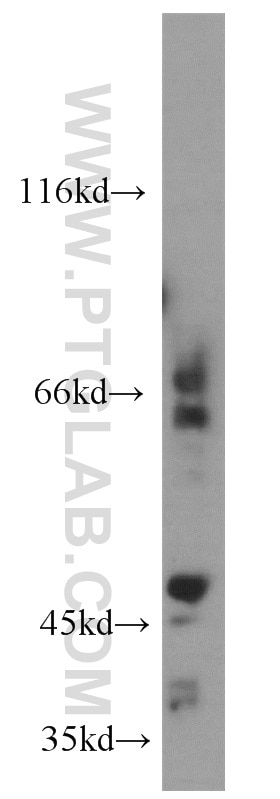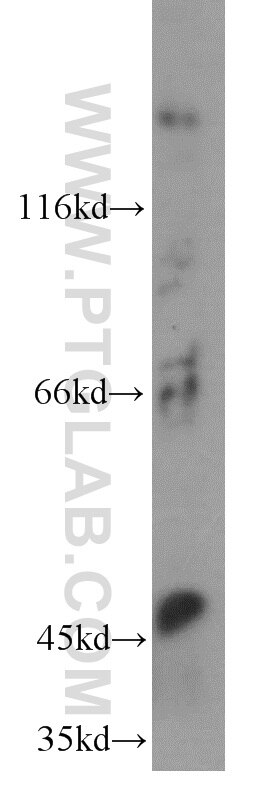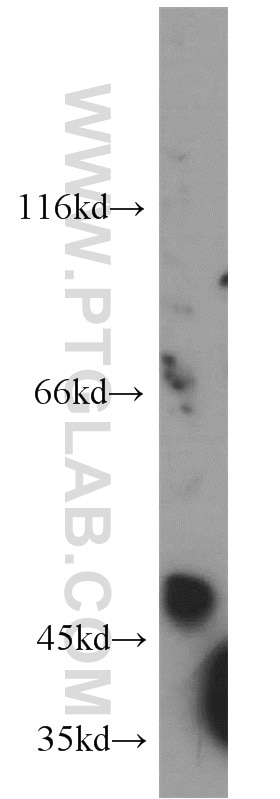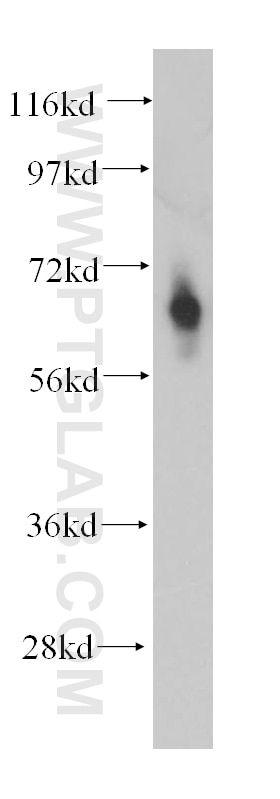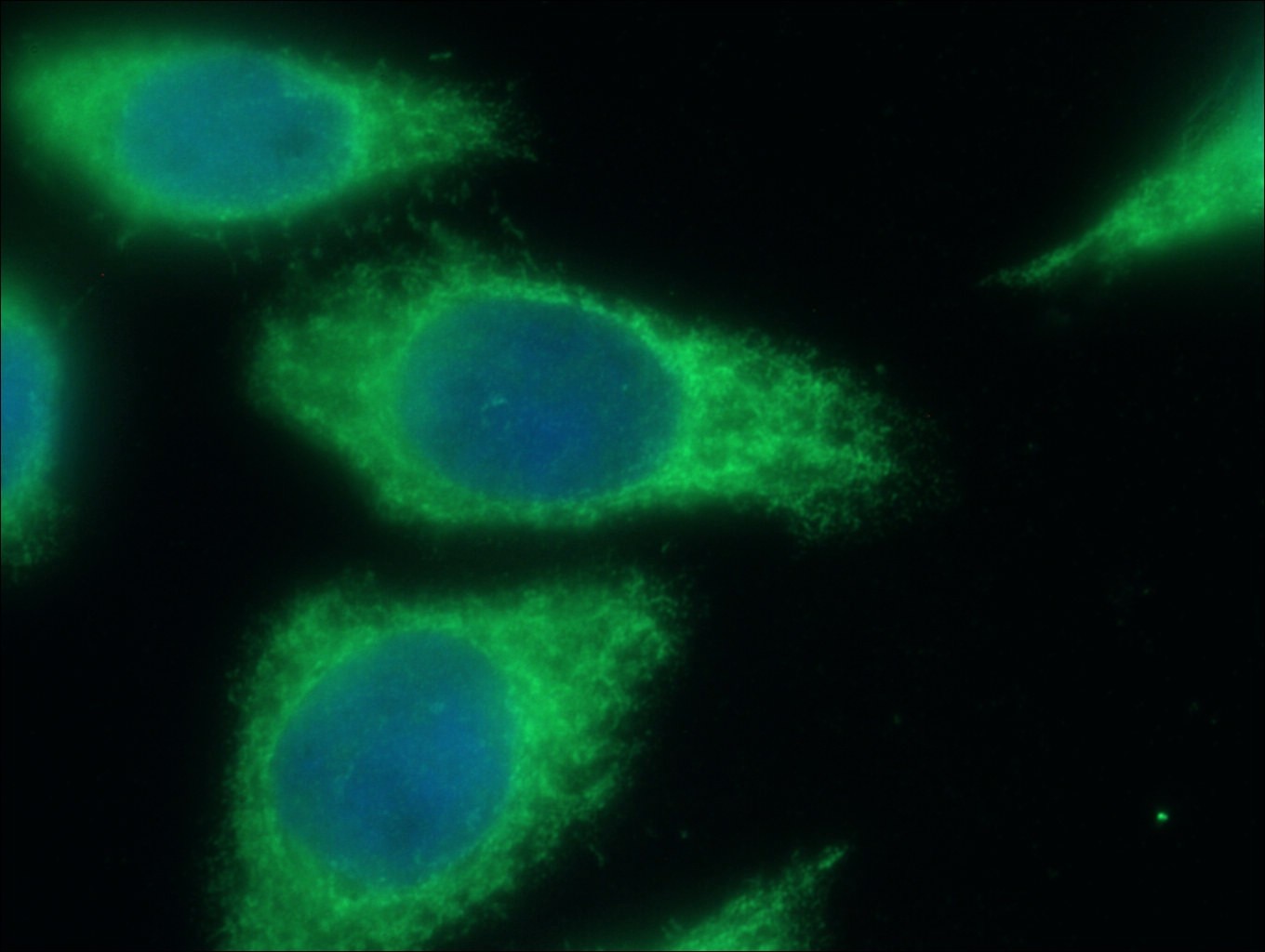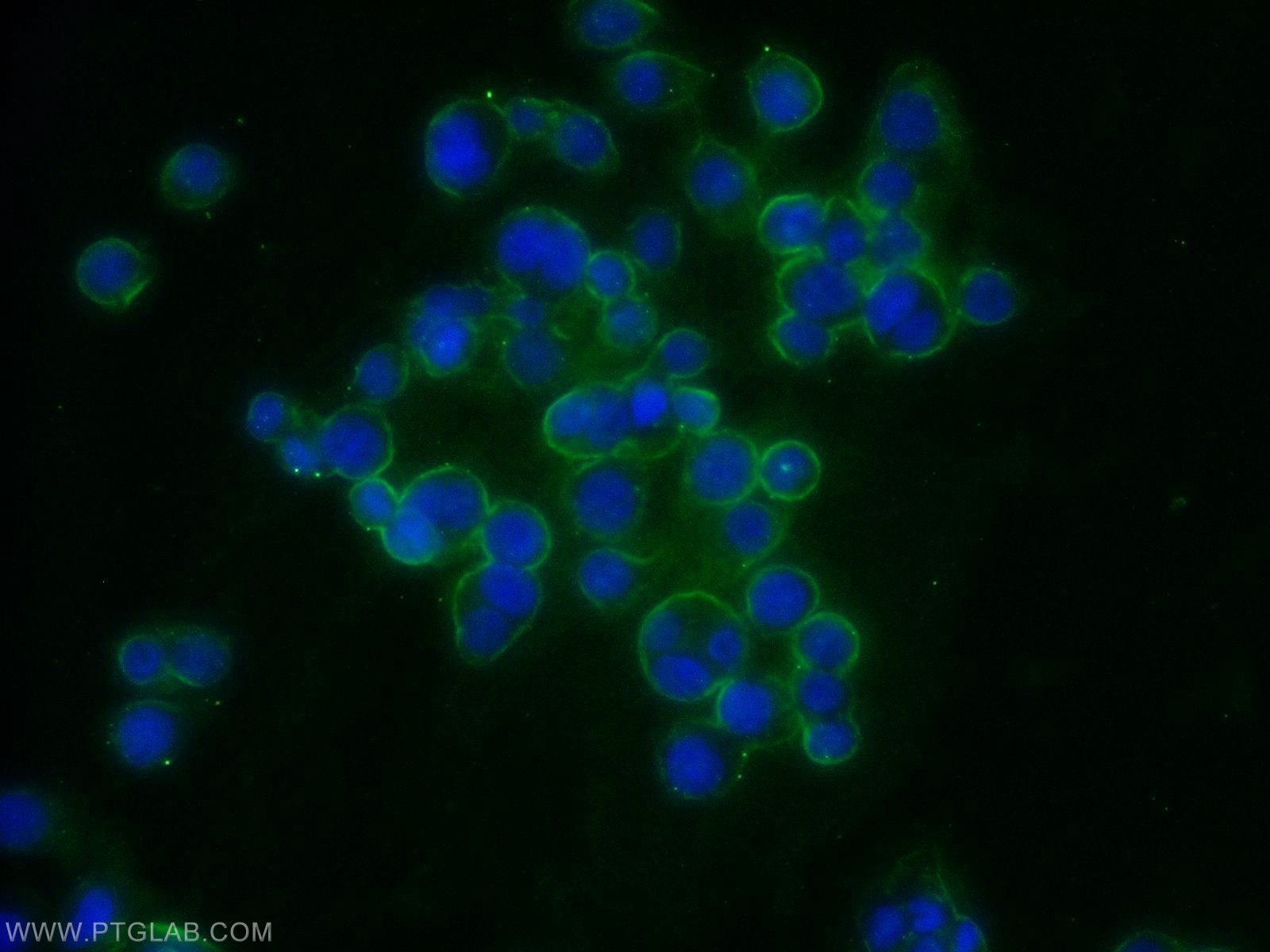MMP14 / MT1-MMP Polyklonaler Antikörper
MMP14 / MT1-MMP Polyklonal Antikörper für IF, WB, ELISA
Wirt / Isotyp
Kaninchen / IgG
Getestete Reaktivität
human, Maus, Ratte
Anwendung
WB, IHC, IF, ELISA
Konjugation
Unkonjugiert
Kat-Nr. : 14552-1-AP
Synonyme
Galerie der Validierungsdaten
Geprüfte Anwendungen
| Erfolgreiche Detektion in WB | HepG2-Zellen, A549-Zellen, COLO 320-Zellen, humanes Kolongewebe |
| Erfolgreiche Detektion in IF | HepG2-Zellen, COLO 320-Zellen |
Empfohlene Verdünnung
| Anwendung | Verdünnung |
|---|---|
| Western Blot (WB) | WB : 1:500-1:2000 |
| Immunfluoreszenz (IF) | IF : 1:50-1:500 |
| It is recommended that this reagent should be titrated in each testing system to obtain optimal results. | |
| Sample-dependent, check data in validation data gallery | |
Veröffentlichte Anwendungen
| WB | See 21 publications below |
| IHC | See 5 publications below |
| IF | See 3 publications below |
Produktinformation
14552-1-AP bindet in WB, IHC, IF, ELISA MMP14 / MT1-MMP und zeigt Reaktivität mit human, Maus, Ratten
| Getestete Reaktivität | human, Maus, Ratte |
| In Publikationen genannte Reaktivität | human, Maus, Ratte |
| Wirt / Isotyp | Kaninchen / IgG |
| Klonalität | Polyklonal |
| Typ | Antikörper |
| Immunogen | MMP14 / MT1-MMP fusion protein Ag5965 |
| Vollständiger Name | matrix metallopeptidase 14 (membrane-inserted) |
| Berechnetes Molekulargewicht | 66 kDa |
| Beobachtetes Molekulargewicht | 66 kDa, 45-50 kDa |
| GenBank-Zugangsnummer | BC064803 |
| Gene symbol | MMP14 |
| Gene ID (NCBI) | 4323 |
| Konjugation | Unkonjugiert |
| Form | Liquid |
| Reinigungsmethode | Antigen-Affinitätsreinigung |
| Lagerungspuffer | PBS mit 0.02% Natriumazid und 50% Glycerin pH 7.3. |
| Lagerungsbedingungen | Bei -20°C lagern. Nach dem Versand ein Jahr lang stabil Aliquotieren ist bei -20oC Lagerung nicht notwendig. 20ul Größen enthalten 0,1% BSA. |
Hintergrundinformationen
MMP14, also named as MT1-MMP, is a key matrix metalloproteinase (MMP) family member which plays a crucial role in tumor growth, invasion and metastasis. MT1-MMP is a cell membrane-bound proteinase, and it enhances degradation of collagen IV, a major component of the basement membrane, by forming a complex with tissue inhibitor of metalloproteinase-2 (TIMP-2) to activate pro-MMP-2. MT1-MMP can influence venous invasion, intrahepatic metastasis , and patient outcome in hepatocellular carcinoma (HCC). MT1-MMP was reported to be present in centromere and could lead to chromosome instability in MDCK cells, indicating that MT1-MMP may have more novel functions in the intracellular compartments. In western blotting, pro-MMP14 (65 kDa) and MMP14 (51 kDa) bands showed with the truncated MMP14 (45, 42, 35, 20 kDa) forms (PMID:12097451).
Protokolle
| Produktspezifische Protokolle | |
|---|---|
| WB protocol for MMP14 / MT1-MMP antibody 14552-1-AP | Protokoll herunterladen |
| IF protocol for MMP14 / MT1-MMP antibody 14552-1-AP | Protokoll herunterladen |
| Standard-Protokolle | |
|---|---|
| Klicken Sie hier, um unsere Standardprotokolle anzuzeigen |
Publikationen
| Species | Application | Title |
|---|---|---|
Mol Ther METTL3-mediated m6A modification of TIMP2 mRNA promotes podocyte injury in diabetic nephropathy. | ||
Int J Mol Sci PLOD2 Is a Prognostic Marker in Glioblastoma That Modulates the Immune Microenvironment and Tumor Progression. | ||
Int J Mol Sci LncRNA H19-Derived miR-675-5p Accelerates the Invasion of Extravillous Trophoblast Cells by Inhibiting GATA2 and Subsequently Activating Matrix Metalloproteinases. | ||
Cancers (Basel) WISP2/CCN5 Suppresses Vasculogenic Mimicry through Inhibition of YAP/TAZ Signaling in Breast Cancer Cells. | ||
Cancer Lett Long non-coding RNA MALAT1 promotes gastric cancer tumorigenicity and metastasis by regulating vasculogenic mimicry and angiogenesis. | ||
Aging (Albany NY) GABARAP suppresses EMT and breast cancer progression via the AKT/mTOR signaling pathway. |
